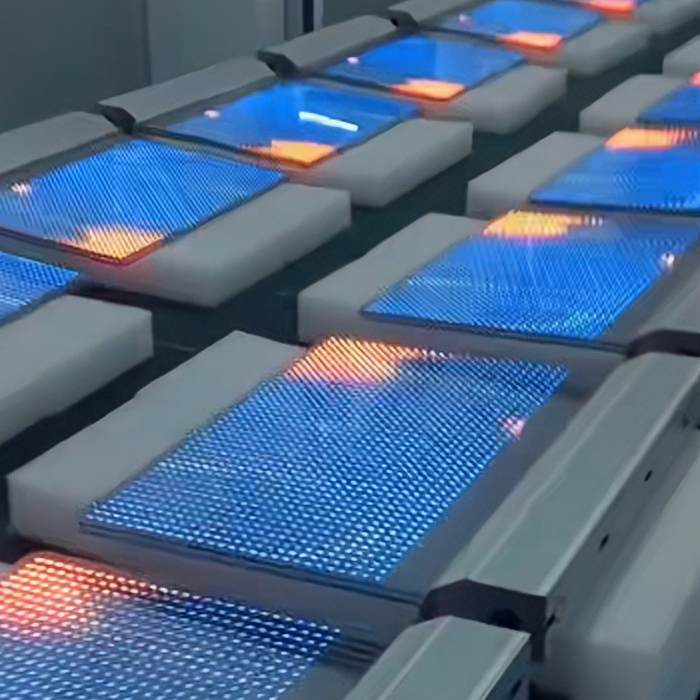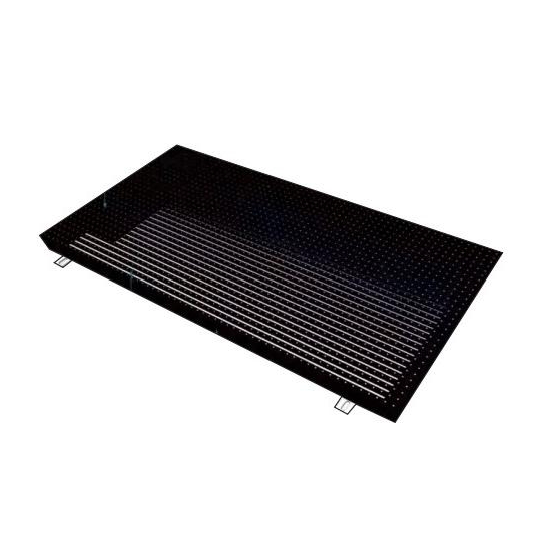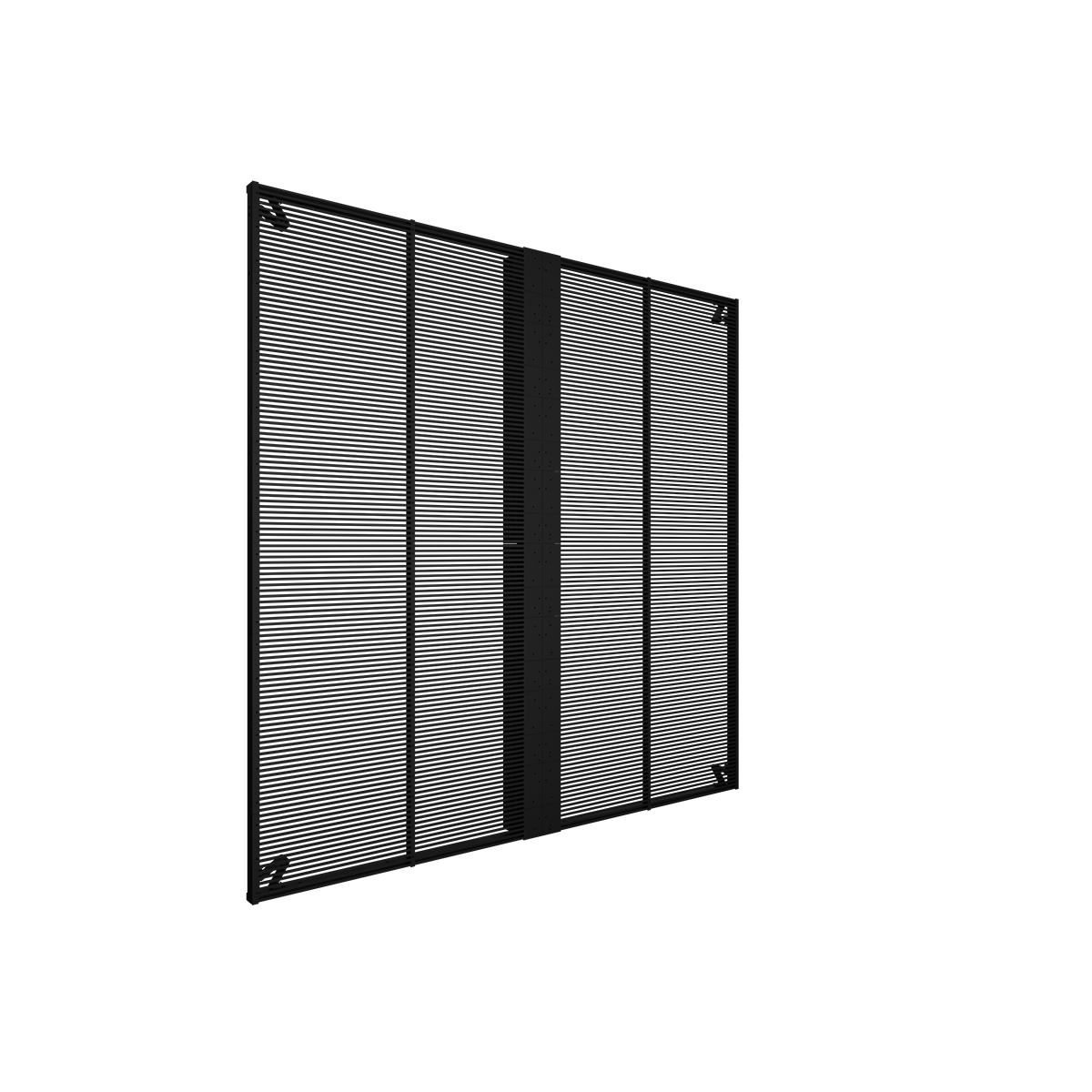Definition and Overview
What are Emitting LED Transparent Displays?
Emitting LED transparent displays represent a cutting-edge technology that combines the clarity of glass with the vivid, dynamic capabilities of LED lighting. These displays are crafted to be see-through, allowing viewers to see content superimposed on real-world objects behind the screen. This technology is revolutionizing the way visual information is presented, blending the digital and physical worlds seamlessly.
Comparison with Traditional LED Displays
Traditional LED displays are opaque, meaning they completely block the view behind the screen, which can limit their integration into environments where transparency is desired or required. In contrast, emitting LED transparent displays offers the unique advantage of visibility through the screen, opening up a multitude of new applications. They provide dynamic content without obstructing the view, enhancing both the aesthetic and functional aspects of their installation environments. This feature makes them particularly useful in areas like retail storefronts, advertising displays, and information kiosks, where visual appeal and practical transparency are equally important.
Basic Technology Behind Emitting LEDs and Transparency
Emitting LED Technology
At the heart of these displays are emitting LEDs, which emit light when an electric current passes through them. Unlike conventional LEDs, which are mounted on an opaque substrate, emitting LEDs in transparent displays are often mounted on a clear substrate, such as glass or a transparent polymer. This setup allows the LEDs to light up and display images or videos without obstructing the view behind the screen. The efficiency and brightness of emitting LEDs make them ideal for transparent displays, providing vivid colors and high contrast ratios even in bright ambient light conditions.
Transparency in Displays
Achieving transparency in these displays involves using specialized materials and design techniques. The transparent substrate is typically embedded with a grid of micro-LEDs or organic LEDs (OLEDs), spaced far enough apart to maintain transparency but close enough to create coherent images. Additionally, advanced manufacturing processes are used to ensure that the electrical connections and supporting structures do not interfere with the display’s transparency. This delicate balance of materials and technology allows for the creation of displays that are both functional and aesthetically pleasing.
Industry and Sector Applications
Retail
In retail, emitting LED transparent displays is transforming storefronts and showrooms. These displays can showcase promotional content, product information, and interactive advertisements directly on store windows without blocking the view inside. This dual function enhances customer engagement by attracting attention with dynamic content while allowing potential customers to see the products displayed behind the glass. Retailers benefit from increased foot traffic and a more engaging shopping experience.
Advertising
The advertising industry has quickly adopted emitting LED transparent displays for their ability to create striking and innovative campaigns. These displays can be integrated into building facades, bus shelters, and other high-visibility locations, delivering vibrant advertisements that capture the attention of passersby. The transparency feature ensures that the advertising content does not obstruct the surroundings, blending digital media with the physical environment seamlessly.
Museums and Exhibitions
Museums and exhibition spaces are utilizing LED-emitting, transparent displays to enhance visitor experiences. These displays can overlay informational content, interactive guides, and multimedia presentations directly onto exhibit cases, allowing visitors to see artifacts and information simultaneously. This integration of digital and physical elements creates an immersive and educational experience, making museum visits more engaging and informative.
Transportation
In the transportation sector, emitting LED transparent displays is used in public transport systems, including buses, trains, and airports. These displays provide real-time information, such as schedules, route maps, and announcements, without compromising visibility. This application is particularly valuable in crowded areas where traditional displays might obstruct views or add to visual clutter. Transparent displays ensure that essential information is available without disrupting the overall aesthetics or functionality of the space.

Specific Use Cases and Benefits
Customer Engagement
One of the primary benefits of emitting LED transparent displays is their ability to enhance customer engagement. By integrating interactive elements into transparent displays, businesses can create more personalized and engaging experiences. For example, a storefront display might react to a passerby’s presence by displaying tailored advertisements or product information. This interactivity not only captures attention but also encourages potential customers to enter the store and explore further.
Informational Displays
Emitting LED transparent displays are ideal for providing information in both public and private spaces. In corporate settings, they can be used for digital signage, displaying important announcements, schedules, and updates without obstructing views. In public areas, such as airports or train stations, these displays offer travelers essential information while maintaining a clean and unobstructed environment. The ability to overlay information on glass surfaces makes these displays versatile and effective communication tools.
Artistic Installations
Artists and designers are increasingly incorporating LED-emitting transparent displays into their work, creating stunning installations that blend digital and physical elements. These displays can show dynamic artwork, videos, and interactive pieces that change in response to viewer interaction. The transparency of the displays allows them to be integrated into various environments without dominating the space, providing a canvas for creativity that enhances rather than detracts from its surroundings.
Key Components of Emitting LED Transparent Displays
LEDs
The LEDs used in transparent displays are typically micro-LEDs or OLEDs, which are chosen for their small size and high efficiency. Micro-LEDs are particularly advantageous due to their brightness and low power consumption. They are arranged in a grid on a transparent substrate, allowing light to pass between them. OLEDs, on the other hand, offer flexibility and excellent color reproduction, making them suitable for applications requiring high image quality and contrast.
Transparency Layers
The transparency layers in these displays are made from clear materials such as glass or transparent polymers. These layers are designed to support the LEDs while maintaining high levels of transparency. Advanced manufacturing techniques, such as fine metal masks and laser patterning, are used to precisely position the LEDs and their connections, ensuring that the display remains clear when not in use.
Control Systems
Control systems are crucial for managing the performance and content of LED transparent displays. These systems include drivers that regulate the power supply to the LEDs, ensuring consistent brightness and color accuracy. Additionally, software solutions are used to manage the content displayed, allowing for easy updates and customization. The control systems must also handle the unique challenges of transparent displays, such as balancing brightness and transparency for optimal viewing.
Technical Specifications
Brightness
Brightness is a critical specification for emitting LED transparent displays, as they need to be visible in various lighting conditions. These displays can achieve high levels of brightness, often exceeding 1000 nits, making them suitable for both indoor and outdoor applications. The ability to adjust brightness ensures that the displays can be optimized for different environments, from dimly lit interiors to bright, sunlit exteriors.
Resolution
Resolution determines the clarity and detail of the content displayed. Emitting LED transparent displays can achieve high resolutions, often comparable to traditional LED displays. The resolution is typically specified in terms of pixel pitch, which refers to the distance between adjacent LEDs. A smaller pixel pitch means higher resolution and more detailed images. High-resolution displays are essential for applications where fine details are important, such as advertising and informational displays.
Viewing Angles
Viewing angles are an important consideration for transparent displays, especially in public and commercial applications. These displays are designed to offer wide viewing angles, ensuring that content remains visible and clear from different perspectives. This feature is particularly valuable in environments where viewers might be moving or viewing the display from various angles, such as in retail spaces or transportation hubs.
Power Consumption
Energy efficiency is a significant advantage of emitting LED transparent displays. These displays typically consume less power than traditional LED or LCD displays, thanks to the efficiency of micro-LEDs and OLEDs. Lower power consumption translates to reduced operating costs and a smaller environmental footprint. This makes emitting LED transparent displays an attractive option for businesses and organizations looking to minimize energy use while maintaining high-performance display solutions.
In conclusion, emitting LED-transparent displays represents a remarkable advancement in display technology, offering unique benefits that traditional displays cannot match. Their applications span across various industries, enhancing customer engagement, providing essential information, and creating immersive artistic experiences. With ongoing innovations and improvements, these displays are set to become even more integral to our visual and digital landscapes.
















